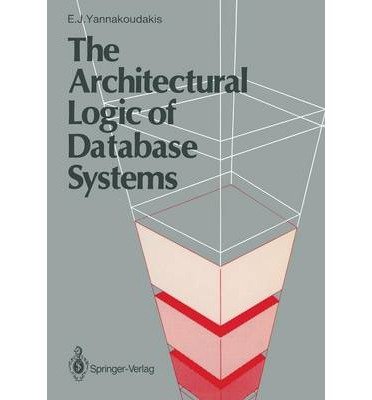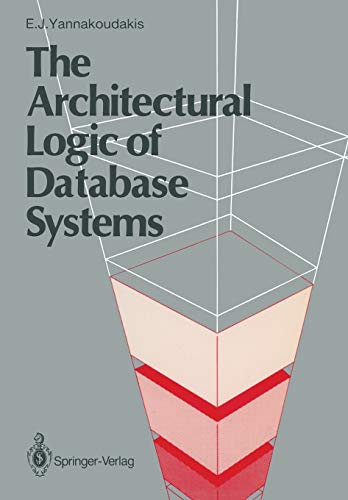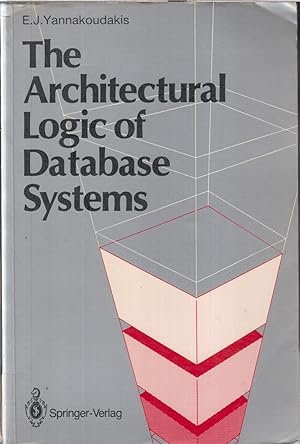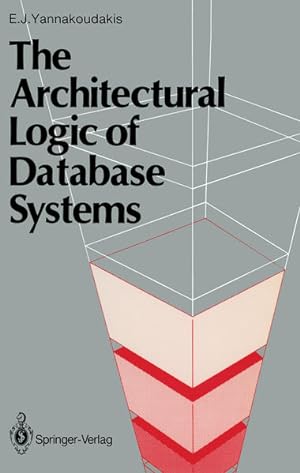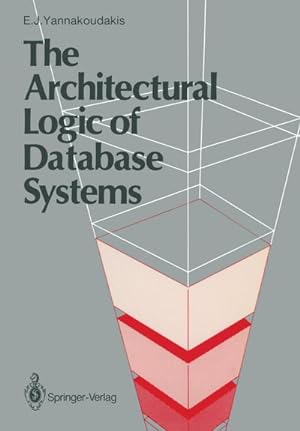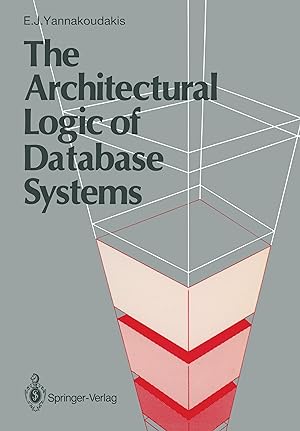architectural logic database systems de yannakoudakis (19 resultados)
Filtros de búsqueda
Tipo de artículo
- Todos los tipos de productos
- Libros (19)
- Revistas y publicaciones (No hay ningún otro resultado que coincida con este filtro.)
- Cómics (No hay ningún otro resultado que coincida con este filtro.)
- Partituras (No hay ningún otro resultado que coincida con este filtro.)
- Arte, grabados y pósters (No hay ningún otro resultado que coincida con este filtro.)
- Fotografías (No hay ningún otro resultado que coincida con este filtro.)
- Mapas (No hay ningún otro resultado que coincida con este filtro.)
- Manuscritos y coleccionismo de papel (No hay ningún otro resultado que coincida con este filtro.)
Condición Más información
- Nuevo (10)
- Como nuevo, Excelente o Muy bueno (1)
- Bueno o Aceptable (8)
- Regular o Pobre (No hay ningún otro resultado que coincida con este filtro.)
- Tal como se indica (No hay ningún otro resultado que coincida con este filtro.)
Encuadernación
- Todas
- Tapa dura (No hay ningún otro resultado que coincida con este filtro.)
- Tapa blanda (19)
Más atributos
- Primera edición (No hay ningún otro resultado que coincida con este filtro.)
- Firmado (No hay ningún otro resultado que coincida con este filtro.)
- Sobrecubierta (No hay ningún otro resultado que coincida con este filtro.)
- Con imágenes (7)
- No impresión bajo demanda (16)
Idioma (1)
Gastos de envío gratis
Ubicación del vendedor
Valoración de los vendedores
-
Architectural Logic of Database Systems
Librería: BookHolders, Towson, MD, Estados Unidos de America
EUR 0,89
EUR 3,68 gastos de envío en Estados Unidos de AmericaCantidad disponible: 1 disponibles
Añadir al carritoCondición: Good. [ No Hassle 30 Day Returns ][ Ships Daily ] [ Underlining/Highlighting: NONE ] [ Writing: NONE ] [ Edition: First ] Publisher: Springer-Verlag Pub Date: 6/1/1988 Binding: Paperback Pages: 320 First edition.
-
The Architectural Logic of Database Systems
Publicado por Springer London, Limited, 1988
ISBN 10: 3540195130 ISBN 13: 9783540195139
Idioma: Inglés
Librería: Better World Books, Mishawaka, IN, Estados Unidos de America
EUR 12,28
Gratis gastos de envío en Estados Unidos de AmericaCantidad disponible: 1 disponibles
Añadir al carritoCondición: Good. Former library book; may include library markings. Used book that is in clean, average condition without any missing pages. Softcover reprint of the original 1st ed. 1988.
-
The Architectural Logic of Database Systems
Librería: Midtown Scholar Bookstore, Harrisburg, PA, Estados Unidos de America
EUR 7,94
EUR 5,20 gastos de envío en Estados Unidos de AmericaCantidad disponible: 1 disponibles
Añadir al carritoPerfect Paperback. Condición: Good. Good paperback, bumped/creased with shelfwear; may have previous owner's name inside. Standard-sized.
-
Architectural Logic Of Database Systems
Librería: Jonathan Grobe Books, Deep River, IA, Estados Unidos de America
EUR 14,28
EUR 4,33 gastos de envío en Estados Unidos de AmericaCantidad disponible: 1 disponibles
Añadir al carritoPaperback. Condición: Very Good. Exlibrary with usual library markings. ; 318 pages.
-
Architectural Logic of Database Systems
Librería: Midtown Scholar Bookstore, Harrisburg, PA, Estados Unidos de America
EUR 15,95
EUR 5,20 gastos de envío en Estados Unidos de AmericaCantidad disponible: 1 disponibles
Añadir al carritoPaperback. Condición: Good. Good paperback, bumped/creased with shelfwear; may have previous owner's name inside. Standard-sized.
-
EUR 10,90
EUR 24,00 gastos de envío desde Alemania a Estados Unidos de AmericaCantidad disponible: 1 disponibles
Añadir al carritoBroschiert. Condición: Gut. 320 Seiten Sofort verfügbar Versand spätestens am nächsten Arbeitstag Rechnung mit ausgewiesener MwSt. liegt bei daily shipping worldwide with invoice ex library in good condition aus Bibliothek in guten Zustand Sprache: Englisch Gewicht in Gramm: 550.
-
EUR 37,45
EUR 6,38 gastos de envío desde Reino Unido a Estados Unidos de AmericaCantidad disponible: 1 disponibles
Añadir al carritoPaperback. Condición: Very Good. The book has been read, but is in excellent condition. Pages are intact and not marred by notes or highlighting. The spine remains undamaged.
-
The Architectural Logic of Database Systems
Librería: Lucky's Textbooks, Dallas, TX, Estados Unidos de America
EUR 53,13
EUR 3,46 gastos de envío en Estados Unidos de AmericaCantidad disponible: Más de 20 disponibles
Añadir al carritoCondición: New.
-
The Architectural Logic of Database Systems
Librería: Best Price, Torrance, CA, Estados Unidos de America
EUR 49,07
EUR 7,78 gastos de envío en Estados Unidos de AmericaCantidad disponible: 4 disponibles
Añadir al carritoCondición: New. SUPER FAST SHIPPING.
-
The Architectural Logic of Database Systems
Librería: Ria Christie Collections, Uxbridge, Reino Unido
EUR 57,60
EUR 13,64 gastos de envío desde Reino Unido a Estados Unidos de AmericaCantidad disponible: Más de 20 disponibles
Añadir al carritoCondición: New. In.
-
EUR 56,04
EUR 17,63 gastos de envío desde Reino Unido a Estados Unidos de AmericaCantidad disponible: 10 disponibles
Añadir al carritoPF. Condición: New.
-
EUR 7,81
EUR 65,00 gastos de envío desde Alemania a Estados Unidos de AmericaCantidad disponible: 7 disponibles
Añadir al carritoTaschenbuch. Condición: Gut. Gebraucht - Gut Sofortversand,übliche Markierungsstempel/Zeichen,altersgemaesser Zustand,durch Lagerung leicht gebogen, innen SEHR GUT.
-
EUR 80,35
EUR 14,23 gastos de envío desde Reino Unido a Estados Unidos de AmericaCantidad disponible: 2 disponibles
Añadir al carritoPaperback. Condición: Brand New. reprint edition. 336 pages. 9.60x6.60x0.76 inches. In Stock.
-
EUR 53,49
EUR 62,91 gastos de envío desde Alemania a Estados Unidos de AmericaCantidad disponible: 1 disponibles
Añadir al carritoTaschenbuch. Condición: Neu. Druck auf Anfrage Neuware - Printed after ordering - If we look back to pre-database systems and the data units which were in use, we will establish a hierarchy starting with the concept of 'field' used to build 'records' which were in turn used to build higher data units such as 'files'. The file was considered to be the ultimate data unit of information processing and data binding 'monolith'. Moreover, pre database systems were designed with one or more programming languages in mind and this in effect restricted independent develop ment and modelling of the applications and associated storage structures. Database systems came along not to turn the above three units into outmoded concepts, but rather to extend them further by establishing a higher logical unit for data description and thereby offer high level data manipulation functions. It also becomes possible for computer professionals and other users to view all information processing needs of an organisation through an integrated, disciplined and methodical approach. So, database systems employ the concepts field, record and file without necessarily making them transparent to the user who is in effect offered a high level language to define data units and relation ships, and another language to manipulate these. A major objective of database systems is to allow logical manipulations to be carried out independent of storage manipulations and vice versa.
-
EUR 50,35
EUR 70,00 gastos de envío desde Alemania a Estados Unidos de AmericaCantidad disponible: 5 disponibles
Añadir al carritoTaschenbuch. Condición: Neu. The Architectural Logic of Database Systems | Emmanuel J. Yannakoudakis | Taschenbuch | xiv | Englisch | 1988 | Springer | EAN 9783540195139 | Verantwortliche Person für die EU: Springer Verlag GmbH, Tiergartenstr. 17, 69121 Heidelberg, juergen[dot]hartmann[at]springer[dot]com | Anbieter: preigu.
-
EUR 105,53
EUR 28,46 gastos de envío desde Reino Unido a Estados Unidos de AmericaCantidad disponible: 1 disponibles
Añadir al carritoPerfect Paperback. Condición: Like New. Like New. book.
-
The Architectural Logic of Database Systems
Publicado por Springer, Springer Mai 1988, 1988
ISBN 10: 3540195130 ISBN 13: 9783540195139
Idioma: Inglés
Librería: BuchWeltWeit Ludwig Meier e.K., Bergisch Gladbach, Alemania
EUR 53,49
EUR 23,00 gastos de envío desde Alemania a Estados Unidos de AmericaCantidad disponible: 2 disponibles
Añadir al carritoTaschenbuch. Condición: Neu. This item is printed on demand - it takes 3-4 days longer - Neuware -If we look back to pre-database systems and the data units which were in use, we will establish a hierarchy starting with the concept of 'field' used to build 'records' which were in turn used to build higher data units such as 'files'. The file was considered to be the ultimate data unit of information processing and data binding 'monolith'. Moreover, pre database systems were designed with one or more programming languages in mind and this in effect restricted independent develop ment and modelling of the applications and associated storage structures. Database systems came along not to turn the above three units into outmoded concepts, but rather to extend them further by establishing a higher logical unit for data description and thereby offer high level data manipulation functions. It also becomes possible for computer professionals and other users to view all information processing needs of an organisation through an integrated, disciplined and methodical approach. So, database systems employ the concepts field, record and file without necessarily making them transparent to the user who is in effect offered a high level language to define data units and relation ships, and another language to manipulate these. A major objective of database systems is to allow logical manipulations to be carried out independent of storage manipulations and vice versa. 336 pp. Englisch.
-
The Architectural Logic of Database Systems
Librería: moluna, Greven, Alemania
EUR 48,37
EUR 48,99 gastos de envío desde Alemania a Estados Unidos de AmericaCantidad disponible: Más de 20 disponibles
Añadir al carritoCondición: New. Dieser Artikel ist ein Print on Demand Artikel und wird nach Ihrer Bestellung fuer Sie gedruckt. If we look back to pre-database systems and the data units which were in use, we will establish a hierarchy starting with the concept of field used to build records which were in turn used to build higher data units such as files . The file was conside.
-
The Architectural Logic of Database Systems
Publicado por Springer London, Springer Berlin Heidelberg Mai 1988, 1988
ISBN 10: 3540195130 ISBN 13: 9783540195139
Idioma: Inglés
Librería: buchversandmimpf2000, Emtmannsberg, BAYE, Alemania
EUR 53,49
EUR 60,00 gastos de envío desde Alemania a Estados Unidos de AmericaCantidad disponible: 1 disponibles
Añadir al carritoTaschenbuch. Condición: Neu. This item is printed on demand - Print on Demand Titel. Neuware -If we look back to pre-database systems and the data units which were in use, we will establish a hierarchy starting with the concept of 'field' used to build 'records' which were in turn used to build higher data units such as 'files'. The file was considered to be the ultimate data unit of information processing and data binding 'monolith'. Moreover, pre database systems were designed with one or more programming languages in mind and this in effect restricted independent develop ment and modelling of the applications and associated storage structures. Database systems came along not to turn the above three units into outmoded concepts, but rather to extend them further by establishing a higher logical unit for data description and thereby offer high level data manipulation functions. It also becomes possible for computer professionals and other users to view all information processing needs of an organisation through an integrated, disciplined and methodical approach. So, database systems employ the concepts field, record and file without necessarily making them transparent to the user who is in effect offered a high level language to define data units and relation ships, and another language to manipulate these. A major objective of database systems is to allow logical manipulations to be carried out independent of storage manipulations and vice versa.Springer Verlag GmbH, Tiergartenstr. 17, 69121 Heidelberg 336 pp. Englisch.


